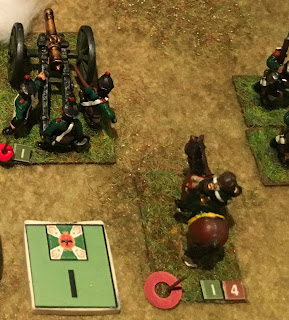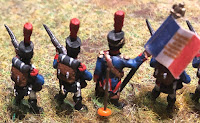Age of Eagles - Regimental Scale

I've developed a scaled down version of Age of Eagles for use with the Programmed Wargame Scenarios (C.S Grant). This version uses a ground scale of 1 inch = 60 yards and 15 minutes to a turn. Differences to Age of Eagles are given below with a revised QRS .










